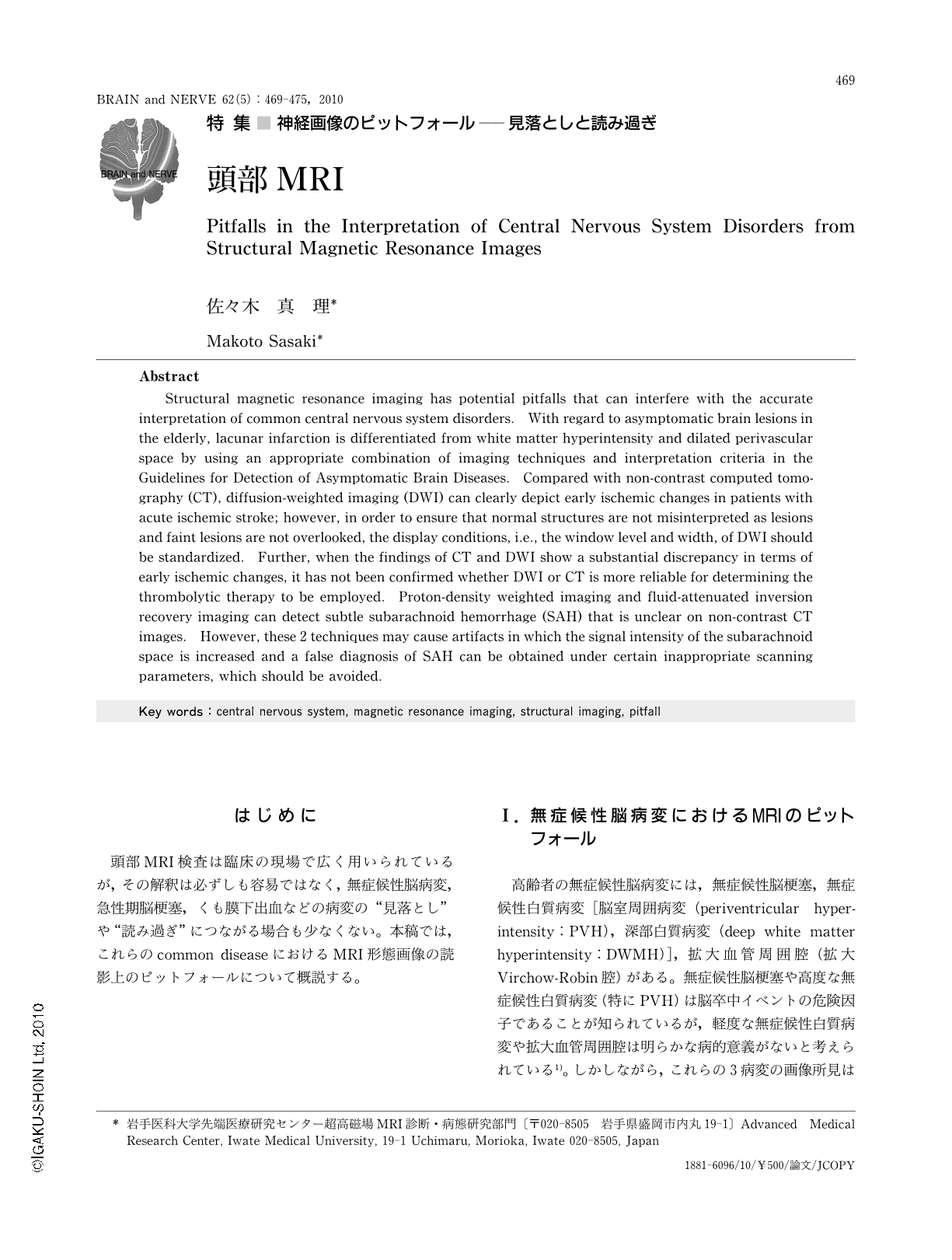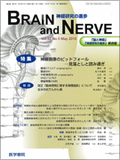Japanese
English
- 有料閲覧
- Abstract 文献概要
- 1ページ目 Look Inside
- 参考文献 Reference
はじめに
頭部MRI検査は臨床の現場で広く用いられているが,その解釈は必ずしも容易ではなく,無症候性脳病変,急性期脳梗塞,くも膜下出血などの病変の“見落とし”や“読み過ぎ”につながる場合も少なくない。本稿では,これらのcommon diseaseにおけるMRI形態画像の読影上のピットフォールについて概説する。
Abstract
Structural magnetic resonance imaging has potential pitfalls that can interfere with the accurate interpretation of common central nervous system disorders. With regard to asymptomatic brain lesions in the elderly,lacunar infarction is differentiated from white matter hyperintensity and dilated perivascular space by using an appropriate combination of imaging techniques and interpretation criteria in the Guidelines for Detection of Asymptomatic Brain Diseases. Compared with non-contrast computed tomography (CT),diffusion-weighted imaging (DWI) can clearly depict early ischemic changes in patients with acute ischemic stroke; however,in order to ensure that normal structures are not misinterpreted as lesions and faint lesions are not overlooked,the display conditions,i.e.,the window level and width,of DWI should be standardized. Further,when the findings of CT and DWI show a substantial discrepancy in terms of early ischemic changes,it has not been confirmed whether DWI or CT is more reliable for determining the thrombolytic therapy to be employed. Proton-density weighted imaging and fluid-attenuated inversion recovery imaging can detect subtle subarachnoid hemorrhage (SAH) that is unclear on non-contrast CT images. However,these 2 techniques may cause artifacts in which the signal intensity of the subarachnoid space is increased and a false diagnosis of SAH can be obtained under certain inappropriate scanning parameters,which should be avoided.

Copyright © 2010, Igaku-Shoin Ltd. All rights reserved.


